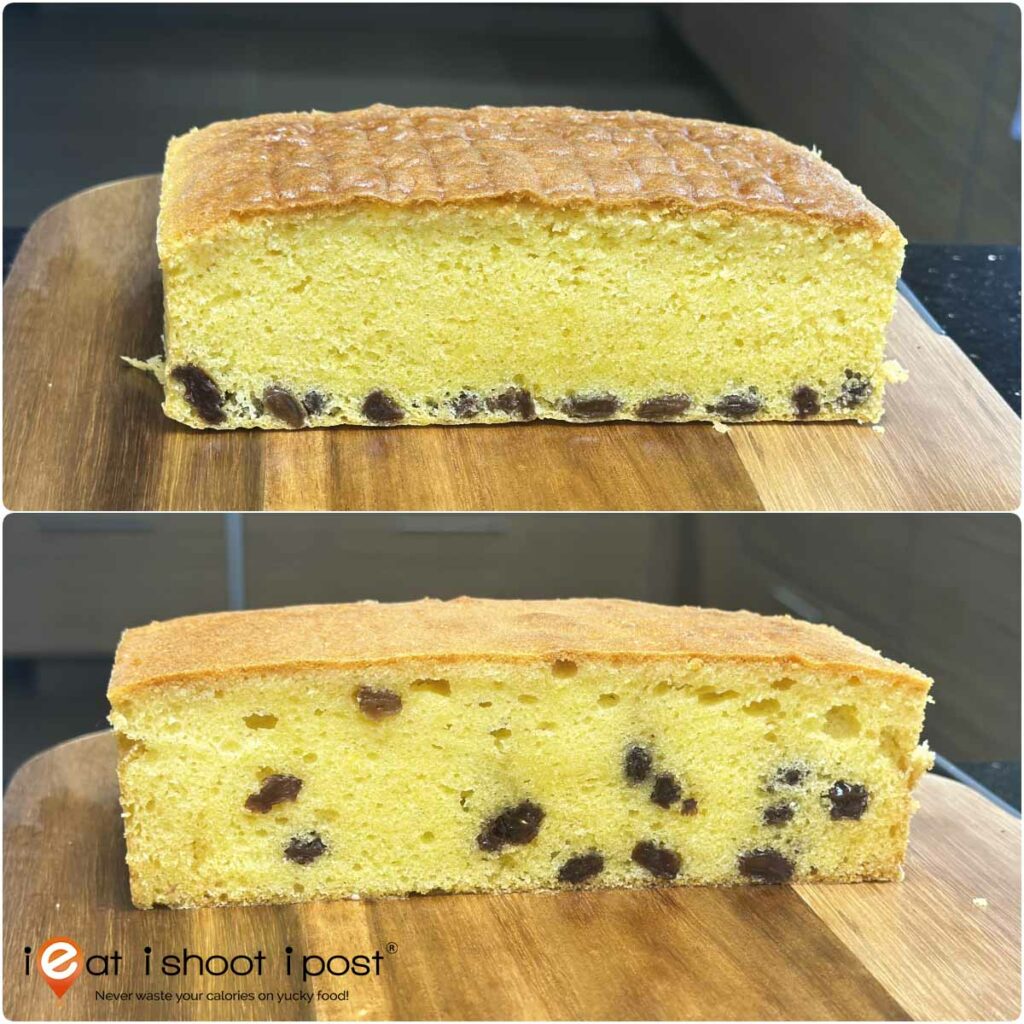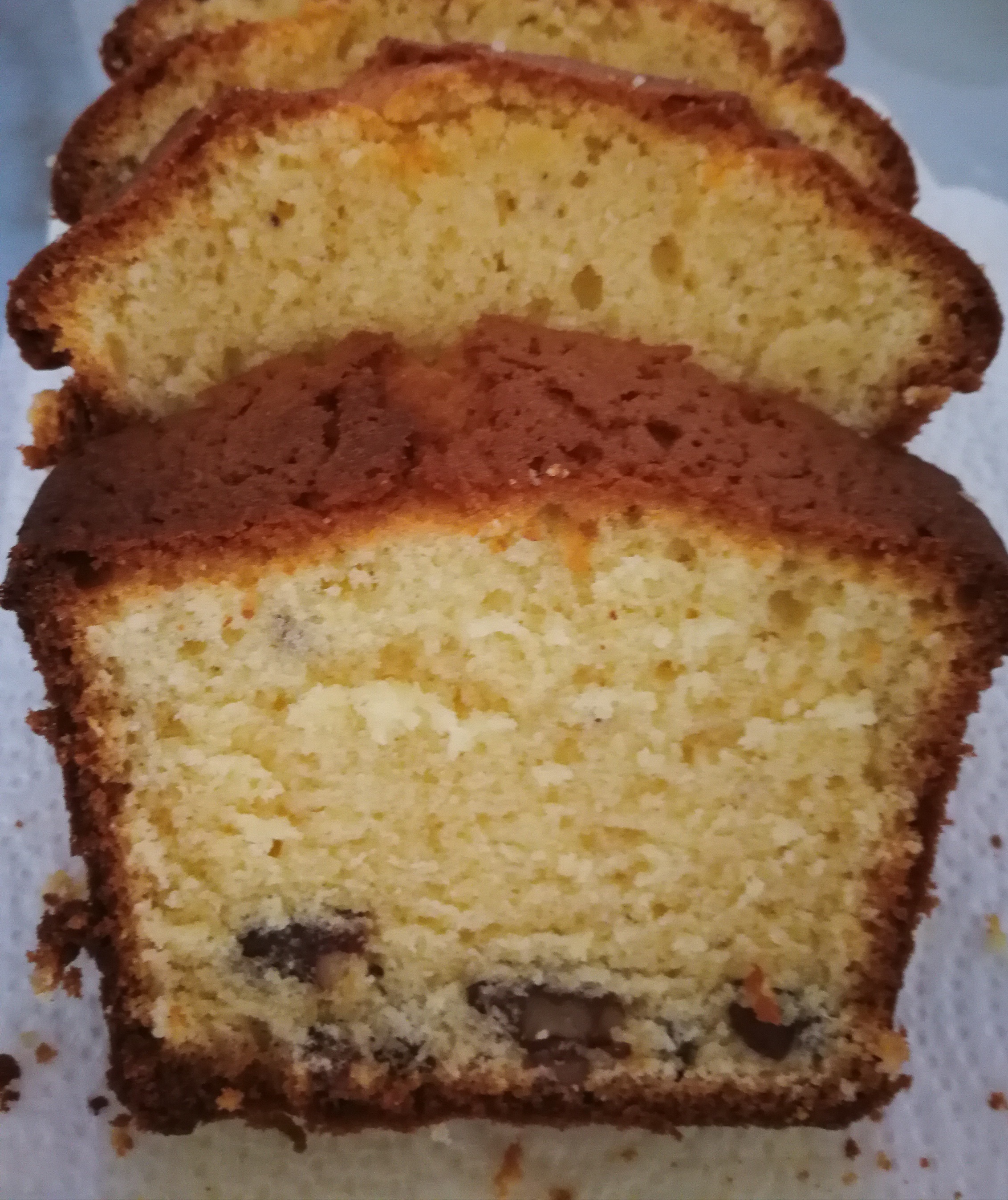
I have a newly updated butter cake recipe! Check it out here.
Most updated butter cake recipe
Here is something that happens in our family every year. We would be celebrating my mother-in-law’s birthday and no matter what trendy birthday cake we buy for her, she would always end up saying that butter cake is still her favourite. And every year I would promise to bake her a butter cake next time! Year after year, that “next time” never happened until Anchor sent me a few blocks of their New Zealand butter to sample!
When I was growing up in the 70’s, the word “cake” usually meant my mum’s orange butter cake. It was the cake I grew up eating for most of my early childhood before she went on to bake Pandan Chiffon Cake and Blackforest gateau! Nowadays, our kids are spoilt for choice with so many different cakes available! But, many of us still find comfort in the good old butter cake. It is old school comfort food and you can’t deny that it is incredibly delicious especially when it is accompanied by a cup of tea!
What Butter to use for your Butter Cake?

The most important ingredient in a butter cake is, of course, the butter. Please don’t use margarine to bake a butter cake as it will not have the same wonderful aroma as real butter. You might not realize this, but there some blocks of “butter” in the butter section of your supermarket shelves which are in fact margarine! If you read the ingredient label, you will realize that they are made of vegetable oil with artificial butter flavour and colouring!
Another thing you might not know is that butter made with milk from cows that graze on pasture (like in New Zealand) have a deeper yellow colour than those made with milk from cows that feed on grain. Grass-fed cows produce milk that contains more beta carotene (precursor of Vitamin A) which gives the butter a deeper colour, and is also higher in Omega-3 fatty acids. I never realized this until my friend, Dean Brettschneider from Baker & Cook, pointed out the advantages of using New Zealand butter during our croissant making class (Dean’s a New Zealander, but he feeds on sourdough).
How the recipe was developed
I started with a very traditional recipe which I got from my aunt who also shared with me her Pandan Chiffon Cake recipe. Her recipe is over fifty years old and was something she learnt from a baking class held at Faith Methodist Church. It is a typical butter cake recipe where you cream the butter first, then add the yolks, fold in the flour and then the whites after they are whisked into a meringue. The recipe produced the typical dense, buttery cake which we are all used to. It was good, but I hate creaming the butter and having to separate the eggs.
So I tried a different method used for genoise sponge cakes where whole eggs are whipped with sugar before adding the melted butter. The big difference is in the proportion of ingredients. I stuck to the old pound cake ratio of 1:1:1:1 of butter, flour, eggs and sugar. To my surprise, the cake turned out to be fluffier while still having that wonderful buttery flavour! I offered both to my extended family members and 9 out of 10 actually preferred my version because it was lighter and not as sweet!
Pros and Cons of a Pound Cake Recipe
The advantages of baking a pound cake this way is that it is much simpler with less room for error. The thing that can go wrong with creaming the butter first is that you really do need to keep the butter within a narrow 15°C to 20°C range in order to get a good rise. So it does take more skill and experience. You also won’t need to separate the eggs and whisk the whites separately with my technique, so the number of steps is reduced. The cake turns out fluffier which means that the same slice of cake will be less sweet and contain less calories! The recipe is so simple that you can bake it without referring to the recipe because everything weighs the same!
The main disadvantage is that the cake is more crumbly and people who are used to the traditional butter cake may complain that it is not dense and buttery enough. But for me, it is the kind of thing I can whip up within an hour and have something my guests will enjoy with afternoon tea! (Getting the butter to room temperature alone will take 30mins with the traditional method!)
Recipe Card
Ingredients and Equipment
Equipment: 12 cup Bundt Pan or 9 in Baking Tin
Anchor butter (unsalted) 227g (1 block)
Castor sugar 225g
Self raising flour 225g
Eggs 225g (4 large eggs)
Evaporated milk 4 Tbsp
Vanilla 2 tsp
Salt 1/2 tsp
Method
1. Add 4 eggs and sugar into a bowl and whip till white and foamy. When you lift the beater out of the eggs it should fall back into the batter in a continuous stream (ribbon stage).
2. Melt the butter and add evaporated milk, salt and vanilla to it.
3. Stream the hot butter into the batter slowly, making sure that the butter is mixed into the batter before adding more. Should take 2 mins.
4. Shift and fold in the flour in stages, making sure it doesn’t clump together.
5. Prepare a bundt pan, tube pan or normal cake pan by smearing it with butter and dusting it with flour.
6. Pour the batter into the baking pan. Tap the pan a few times to release the bubbles.
7. Bake in at 170°C (non fan forced) for 35 mins or until a skewer inserted into the cake comes out clean.
8. Leave to cool for 15mins before de-panning and leaving to cool.
NB: The crust is incredibly tasty and using a bundt pan will ensure that you get a whole lot more tasty crust with each slice!
Disclosure
This recipe was sponsored by Anchor Food Professionals (AFP). In an effort to promote dairy education amongst consumers, AFP has partnered 9 local bakeries to create 9 limited edition floral, tea-inspired cakes using butter and cream by Anchor. Available from now till 31 December 2017, stand a chance to win return tickets to New Zealand when you purchase one of these cakes at participating outlets. Find out more at itscaketime.sg.
Disclosure: Some links above are affiliate links, meaning, at no additional cost to you, we will earn a small commission if you click through and make a purchase.













Hi Linda, actually butter cakes usually do crack in the middle. They are typically baked in a loaf pan and is quite acceptable to have that crack. If you want to prevent it from cracking, you can insulate the sides of the baking tin so that the sides do not cook so fast.
Hi Dr Tay, Thank you for the advice.
Hi Dr Tay
My cake turned out really dense. Did i overmix the flour?
The cake did not rise along the sides as much as i expected, though it did rise a fair bit in the middle and cracked too.
Also, after melting the butter is it normal for the solids and oil to separate?
Hi Justin, two thing can go wrong. One is you didn’t beat the eggs long enough. It will take at least 5 mins on the stand mixer or 8-10mins on hand held. And yes, if you overmix the flour, it will turn out very dense. You need to lightly fold in the flour and stop once you don’t see any white flour, even if it looks a little lumpy. Yes there will be a little sediment when you melt butter.
Hi Dr Tay, can you advise if there is a substitute for evaporated milk? Thanks
Just use whole milk
Great. Thanks Dr Tay. Will try to bake this cake soon.
Do let me know how it went!
Hi Dr Tay, it is yummy ? but my cooking time is abt 50 min. I am not sure of the reason.
Its probably because your oven is not as hot as mine. As long as the cake tastes good, that’s fine!
I see.. I will try again. Thanks Dr Tay ?
Dr Tay, super easy recipe. Thanks.
But can I ask y my walnut sink..?
This recipe is not thick enough to hold walnuts or raisins. If you want to add walnut, you have to use the traditional butter cake recipe where you whip the butter with sugar first.
Noted. Thanks .
Hi Dr Tay,
How would you tweak this recipe for a chocolate butter cake? Just add in additional Cocoa powder? or replace 50g flour with Cocoa powder?
That’s a good question. I haven’t tried it yet, but what I would do is to add some chocolate emulco into the mix at the end. You can buy these at specialty baking shops.
Thanks for your reply. Will give it a try and test out the ratios…
You can just add it in to cool the butter down.
Powdered sugar has cornstarch. It should be alright but I am not 100% sure.
hi dr tay, is it ok to use cake flour instead of self-rising flour? if so, any idea the measurement for cake flour? thanks!
Yes, but you need to add 1 tsp baking powder for every cup of cake flour you use.
I just made this. Used more butter, a mix of all-purpose and wholewheat flour instead of self-raising flour, reduced sugar to 150g (mix of brown and white), and whole milk instead of evaporated milk. Good thing is that this recipe is very forgiving so the cake still tastes fabulous! I baked it at 175 degrees for 40 minutes. 🙂
Thanks for sharing! Glad it turned out ok!
Dr Leslie,
Just made this cake it is beautiful and easy. Can i use a cake mixer to mix the flour instead of folding in method?
You have to be very careful not to over mix it and use the lowest speed possible. If you over mix it, the cake will not be as tender
When you add the butter, do you mix in by hand or with the mixer?
MIxer
Hi Dr Leslie, Can i bake this in a loaf pan?
and the vanilla stated refers to vanilla essence or extract?
Pls advise! thank you 🙂
Sure! I have used both essence and extract before and they both work.
Hi Dr Tay, may I know why bake using non fan forced?
Can we use low fat milk instead? Thanks (:
Usually cakes are baked without the fan on. You can certainly use low fat milk.
Hi Dr Tay, how much orange juice should I add for the above recipe to make a butter orange cake?
Hi Eugenia,
For orange cake I would add orange zest and orange oil which you can buy from bakery shops. Orange juice doesn’t really give much fragrance